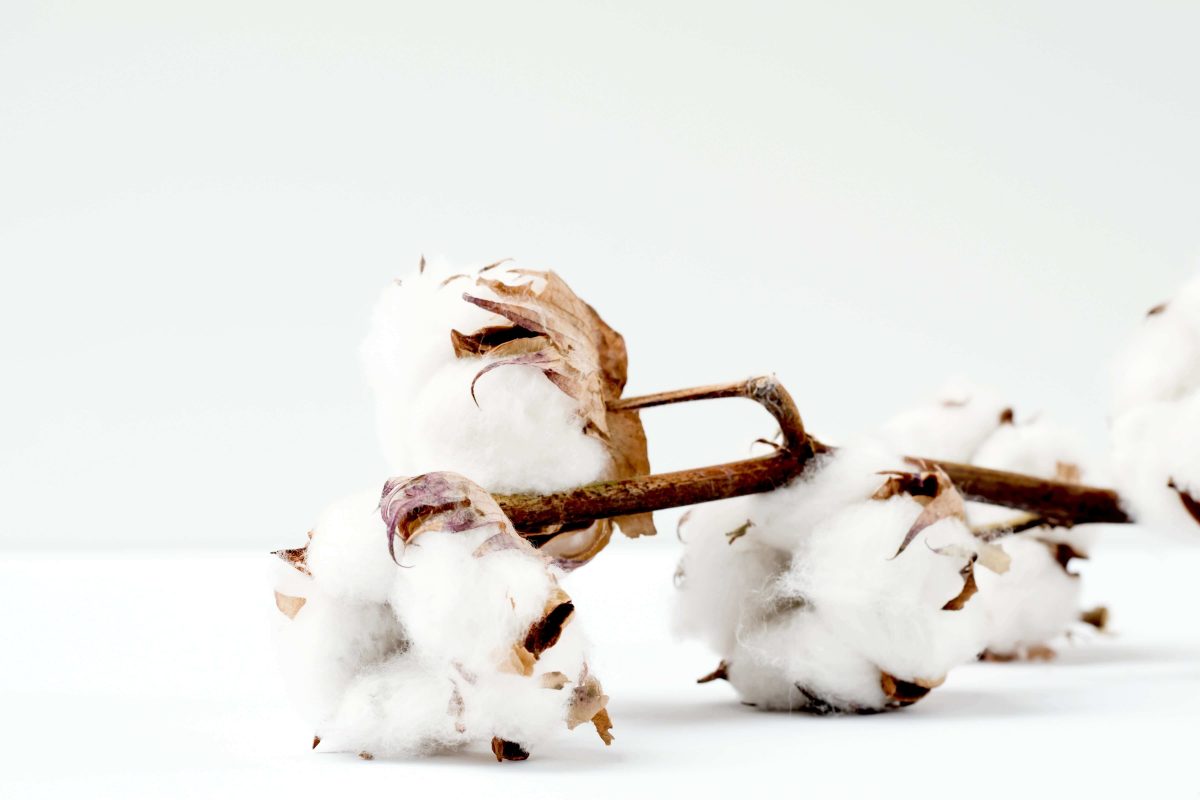No products in the cart.
NEWS, SUSTAINABLE FASHION
Organic cotton – What it is and how it helps the planet
At Fashion for Two we have consciously chosen our raw material to be exclusively organic cotton. Are you familiar with the concept? Do you really know what his choice means and what impact it has on the environment? Give yourself a few minutes and especially to the planet and read why you have to choose it now and forever…
WHAT IS ORGANIC COTTON?
Organic cotton is cotton that is produced and certified to organic agricultural standards. Its production sustains the health of soils, ecosystems, and people by using natural processes rather than artificial inputs. Importantly organic cotton farming does not allow the use of toxic chemicals or GMOs (genetically modified organisms). Instead, it combines tradition, innovation, and science to benefit the shared environment and promote a good quality of life for all involved.
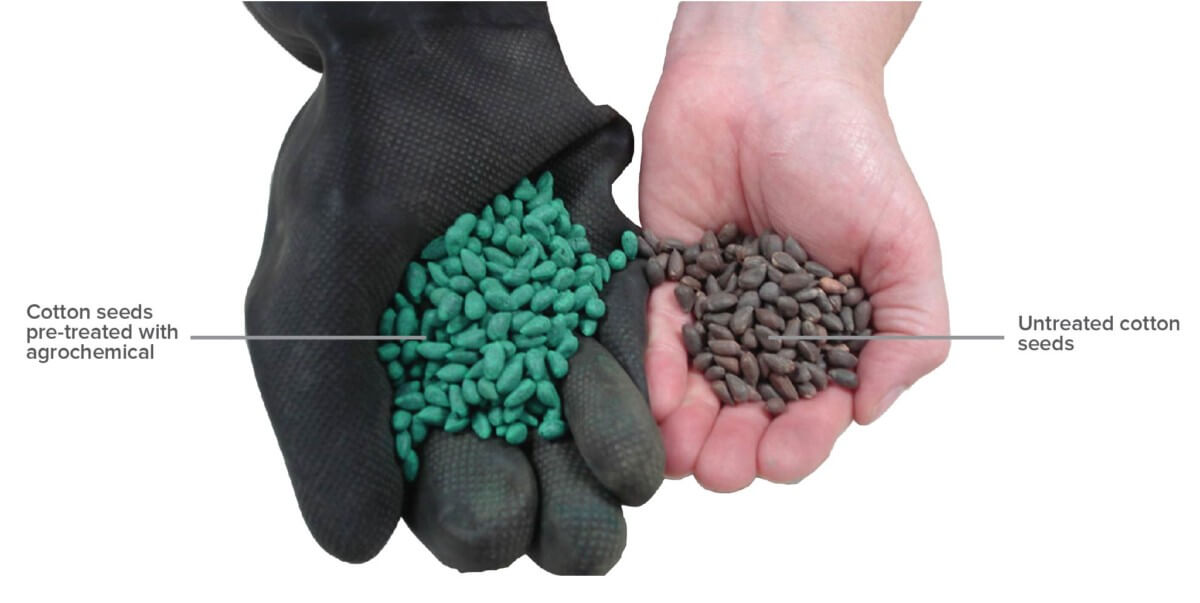
WHY IS IT IMPORTANT TO CHOOSE ORGANIC COTTON
Reduces environmental footprint
 In the growing of organic cotton:
In the growing of organic cotton:
✔️ No toxic chemicals are used
✔️ Does not damage the soil
✔️ Has less impact on the air
✔️ Uses 88% less water
✔️ Uses 62% less energy
Conventional cotton uses:
❌ About 16% of the world’s insecticides
❌7% of pesticides.
Promotes safe work & better livelihoods
 Growing organic cotton keeps farmers and their families safe. They are not exposed to toxic chemicals in the field or through their food and water supply. It also means farmers grow more than one crop which supplements their food and income.
Growing organic cotton keeps farmers and their families safe. They are not exposed to toxic chemicals in the field or through their food and water supply. It also means farmers grow more than one crop which supplements their food and income.
Model for the future
 By 2025, two-thirds of the world’s population may face water shortages. But organic cotton is 80% rain-fed, which reduces pressure on local water sources. The absence of chemicals also means that water is cleaner and safer. Cotton is often grown in water-scarce areas using irrigation and it takes 2,700 liters of water to make a conventional cotton t-shirt.
By 2025, two-thirds of the world’s population may face water shortages. But organic cotton is 80% rain-fed, which reduces pressure on local water sources. The absence of chemicals also means that water is cleaner and safer. Cotton is often grown in water-scarce areas using irrigation and it takes 2,700 liters of water to make a conventional cotton t-shirt.
Impacts our food system
 Organic cotton is grown from organic cotton seeds. Cottonseed oil is used in a variety of food products such as cookies, chips, and vegetable oil, and is also fed to livestock. So while cotton fiber is not something we put in our body, the by-product can make its way into our diets. Do not forget that our skin is our largest vital organ and in conditions of high temperature and humidity (ie when we sweat) absorbs all the chemicals of the clothes we wear. By choosing clothes made of organic cotton – which lacks all the pesticides, herbicides, and chemical fertilizers that conventional cotton carries – we avoid the impregnation of chemicals in our bodies.
Organic cotton is grown from organic cotton seeds. Cottonseed oil is used in a variety of food products such as cookies, chips, and vegetable oil, and is also fed to livestock. So while cotton fiber is not something we put in our body, the by-product can make its way into our diets. Do not forget that our skin is our largest vital organ and in conditions of high temperature and humidity (ie when we sweat) absorbs all the chemicals of the clothes we wear. By choosing clothes made of organic cotton – which lacks all the pesticides, herbicides, and chemical fertilizers that conventional cotton carries – we avoid the impregnation of chemicals in our bodies.
Fair price for sustainability
 When you buy organic cotton you are investing in water conservation, cleaner air, better soil, and farmer livelihoods. The price for organic cotton is therefore sometimes, but not always, higher. However, with demand on the rise, more choices will become available. At Fashion for Two we choose to burden the difference, offering competitive prices in order to spread ecological awareness and upgrade the quality of life of our planet.
When you buy organic cotton you are investing in water conservation, cleaner air, better soil, and farmer livelihoods. The price for organic cotton is therefore sometimes, but not always, higher. However, with demand on the rise, more choices will become available. At Fashion for Two we choose to burden the difference, offering competitive prices in order to spread ecological awareness and upgrade the quality of life of our planet.
You can make a difference

Caring for the world and the people we share it with is a life choice. Choosing organic cotton is part of this choice. In 2015, 26 million metric tonnes of cotton were produced globally, much of it for the apparel industry. Organic cotton makes up less than 1% of this. By choosing organic over conventional cotton you have the purchasing power to influence brands, manufacturers, and even farmers. So let’s change this number!
Organic By Choice and I Choose Organic to take the viewer on a visual journey through the benefits of organic cotton from farm to fashion. Many of the benefits will be easily recognizable, such as healthy lifestyles for all. Others may be more surprising such as the protection of wildlife, waterways, and forests.
WHEN YOU CHOOSE ORGANIC COTTON YOU SAVE…
When you choose organic cotton instead of conventional, for each piece of clothing you can potentially save water, energy, and carbon emissions. It may not seem like much but start adding up the potential impact you could have made by converting the t-shirts in your entire wardrobe. 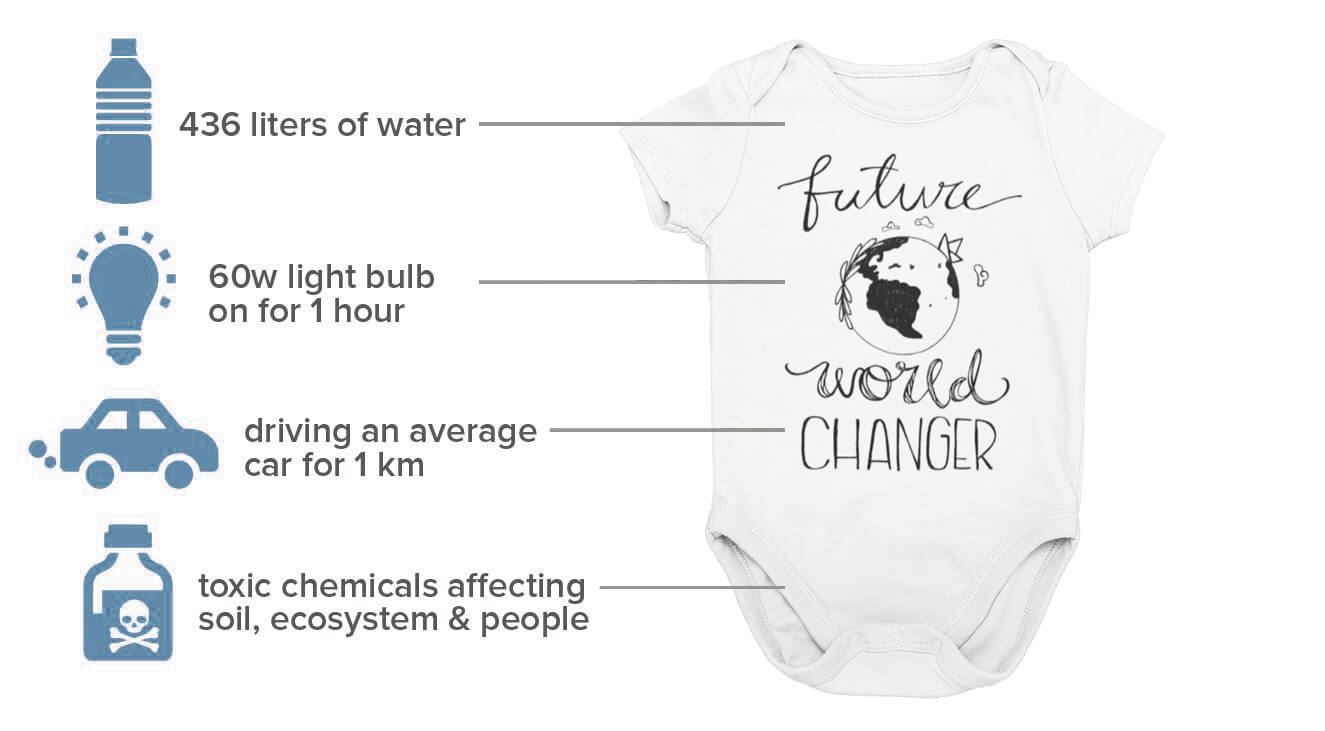 (The estimation above is a collaborative effort – derived from applying average garment weights and LCA data from Textile Exchange)
(The estimation above is a collaborative effort – derived from applying average garment weights and LCA data from Textile Exchange)
IF IT IS CERTIFIED TO AN ORGANIC STANDARD YOU CAN BE SURE IT’S ORGANIC…
Just because a garment is labeled as green, sustainable, or eco-friendly does not make it organic. Cotton clothing is only organic if it is certified to an organic cotton standard.
OCS (Organic Content Standard) provides third-party assurance that the organic content in your clothes can be traced back to the source, while GOTS (Global Organic Textile Standard) traces the organic content in your clothes and ensures that it is processed socially and sustainably.
COMPARING ORGANIC STANDARDS
There are currently two independent organic certifications for organic cotton: Organic Content Standards (OCS) and Global Organic Textile Standard (GOTS). The difference between the two standards are: 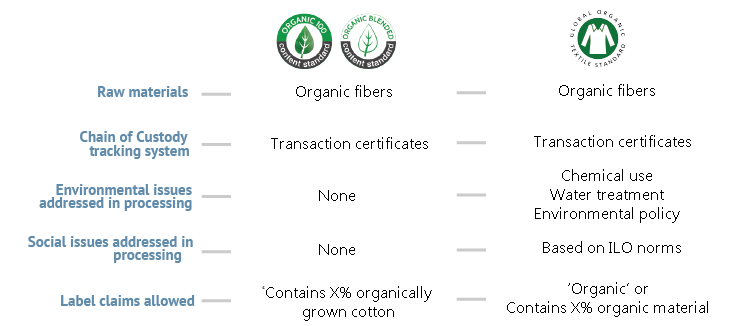
SOCIAL AND ECONOMIC BENEFITS
Social and economic impacts aren’t easy to quantify, but to provide an insight into the benefits experienced by organic cotton farmers, Textile Exchange carried out a Sustainability Assessment. The findings are: 
IN SIMPLE TERMS…
In 2015, by growing organic instead of conventional cotton, we have: 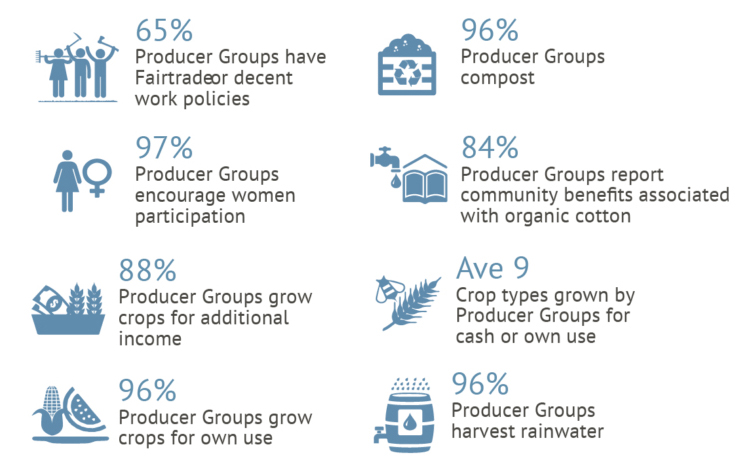
ORGANIC COTTON FARMING SYSTEM
An organic cotton farming system is one that sustains the health of soils, ecosystems, and people. It relies on ecological processes, biodiversity and cycles adapted to local conditions rather than the use of artificial elements such as pesticides and other chemicals that cause adverse effects.
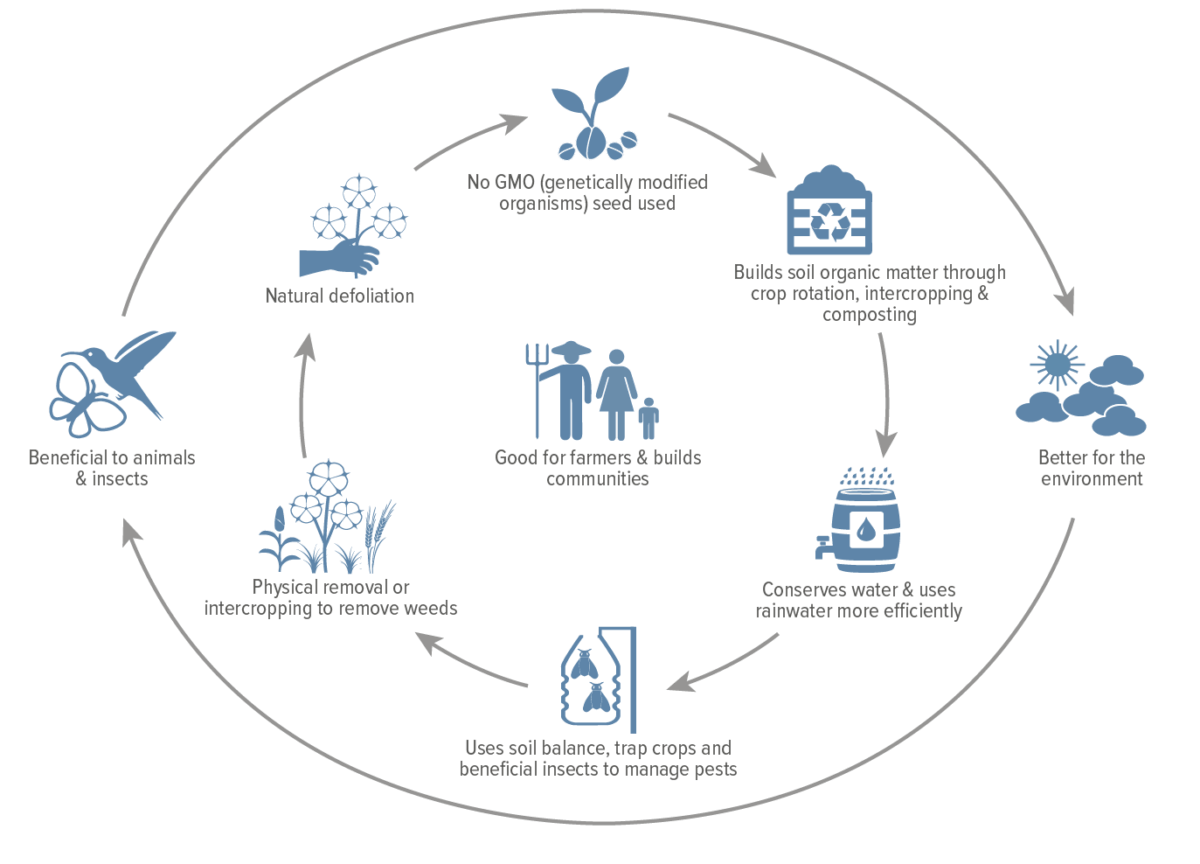 Organic farming combines tradition, innovation, and science and promotes fair relationships and good quality of life for everyone involved.
Organic farming combines tradition, innovation, and science and promotes fair relationships and good quality of life for everyone involved.
The organic cotton farming system can be applied at different scales. However, an average organic cotton farmer has only 4.3 hectares (one hectare equals approximately 2.5 acres), which indicates that organic farming systems are relatively small.
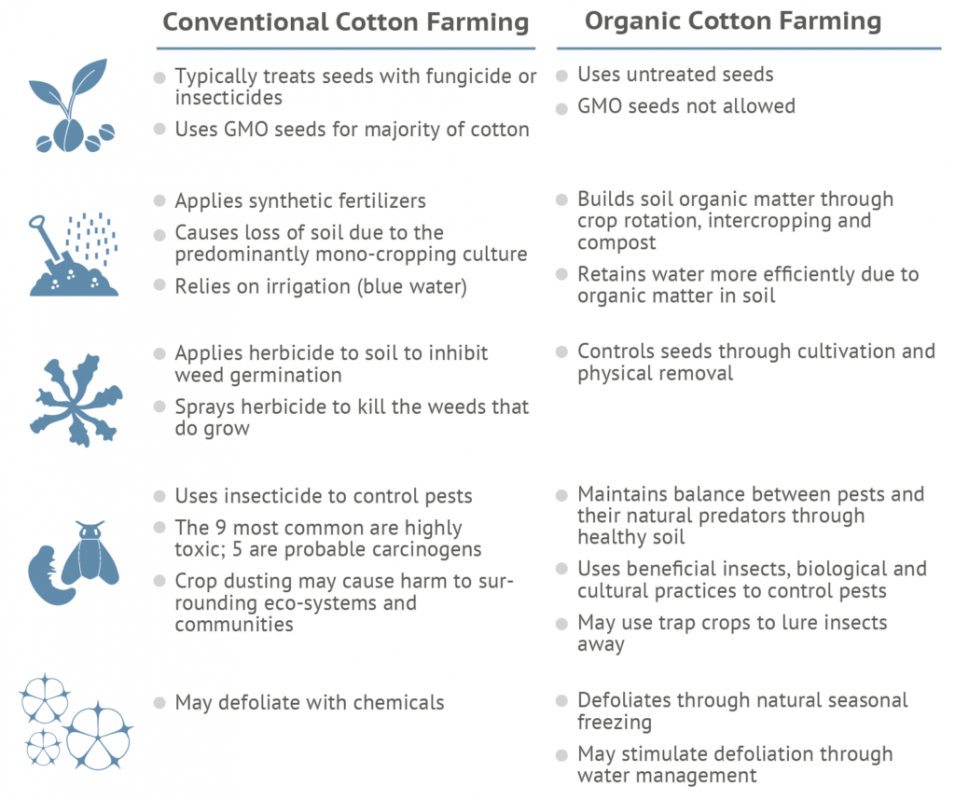
WHAT YOU CAN DO:
#1. Choose Organic Cotton
Next time you shop for cotton products – choose organic.
#2. Check For Certification
Make sure your organic cotton product is certified by checking the label.
#3. Spread The Word
Talk about organic cotton to your family and friends – in person or on social media.
#4. Ask For Organic Cotton
Tell your favorite brands that you want to see more organic cotton in their products.
Our brand, Fashion for Two, follows a green policy for a better future. We are all part of this planet and we must respect and care for it. By choosing organic cotton over conventional cotton, we support the environment, our fellow human beings, and offer ourselves and our family a better standard of living.
Now that you know, what will you buy next time?
Most of the information and statistical data we found from the international, non-profit organization TextileExchange.org Main Photo credits to Marianne Krohn.

 Ελληνικα
Ελληνικα
